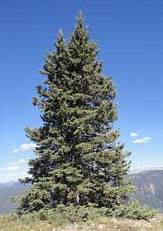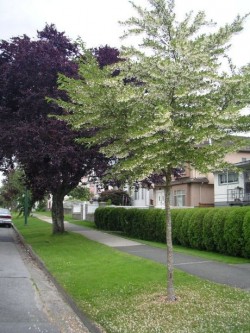Skip to a section:
- Costs – Do you know how much you should be paying for tree maintenance in Vancouver, BC? We have that information here for you.
- FAQs – Find out more about the trees currently growing in Vancouver as you move forward with planting new ones in your yard.
- Services – Find local pros in your area who can help you plant or remove trees immediately.
How Much Do Tree Services Cost in Vancouver?
Vancouver, British Columbia, is world renowned for its trees, which include more than 50 species of native varieties. Property owners in the region benefit from the beauty and shade such trees provide. However, in certain cases, such as when a tree is dead or dying, in danger of falling or overgrown and in need of trimming, Vancouver land owners may need professional help in pruning or removing trees or stumps.
How Much Does Tree Removal Cost?
Professional arborists in the Vancouver area offer the expertise and equipment needed to take care of problematic trees or stumps. Removal of a tree can cost between $200 and $500.
How Much Does Stump Removal Cost?
Based on current labor rates as well as equipment maintenance and operation expenses, it costs between $75 and $140 to remove a stump. The cost varies depending on the size of the stump, how accessible it is and whether the property owner prefers it to be ground or removed completely. While grinding a stump tends to be relatively straight-forward work, stump removal can prove time-consuming and difficult if the stump’s root system is complex.
Average Cost of Tree Maintenance in Vancouver
The cost of pruning or removing trees tends to range from $200 to $1,200, depending on the number of trees and their sizes. Certain trees are so tall they require the use of specialty equipment and more time in general.
Vancouver Tree Facts & FAQs
The City of Vancouver boasts more than 130,000 trees within its borders. The area’s beautiful greenery features many examples of British Columbia’s official tree, the Western Red Cedar, as well as some Broadleaf Maples which were planted in 1897.
Vancouver Tree-Related Regulations
When it comes to residential trees within city limits, Vancouver enforces a Protection of Trees by-law that limits property owners to removing only one tree during a 12-month period given that they replace the tree elsewhere on their property. Exceptions to the one-tree limit include the following:
- A plumber states that the roots of a tree interfere with drainage or sewer systems.
- An arborist states that a tree is dying, is dead or otherwise poses a hazard.
- A particular tree is encroaching on utility wires and will continue to pose a problem even if pruned.
- On property being developed, a tree is located in an area that prevents construction of a garage or other accessory building on the property.
Pruning and Removal
While arborists will remove trees nearly any time of the year, they suggest that property owners wait until December, after most leaves have fallen and before the harder freezes of winter, to remove or significantly trim a tree. Without the spring, summer and fall foliage, this is a good time of the year to spot branches that require removal. It is also a time when many trees are dormant. Trees respond well to dormant pruning by resuming growth in the spring. It is also beneficial to prune trees while they are dormant because this is a time of year with few insects or diseases present.
Young trees generally do not require pruning until they are about four years old. At this point, experts advise looking for branches that rub together and removing them, or paying an arborist to remove them, in order to promote balanced growth.
In addition to improving aesthetics, occasionally pruning trees helps maintain their health by removing dead, broken and diseased branches. It is also a good safety practice, as vulnerable branches can become airborne during windstorms and potentially break windows or even strike someone.
Tree Diseases
According to the Canadian Ministry of Agriculture, there are several diseases that tend to afflict trees in the Vancouver area, including two bacterial diseases that affect woody ornamental trees. These are Erwinia fire blight, which only attacks apple and pear trees as well as other trees and shrubs in the Rosaceae family, and Pseudomonas bacterial blight. Oak, maple, dogwood and sycamore trees are vulnerable to twig die-back in the spring and summer, while the region’s famous western red cedar often falls victim to “cedar flagging,” a browning of the needles.
Planting Trees in Vancouver
When it comes to planting trees, arborists recommend doing so during the first few weeks of spring. Experts suggest looking for a place away from overhead utility wires to plant a tree. It is also a good idea to plant the tree with enough space surrounding it that it does not encroach on fences, buildings, property lines or other trees.
Vancouver residents find that their soil is ideal for planting trees, but mixing in compost helps offset soil that is too sandy or filled with clay. Compost is also useful in new developments where it is likely much of the topsoil has been removed.
Fruit Trees
 Many Vancouver urbanites are growing more of their own food within city limits. Apples grow particularly well in the local climate as do pears, cherries and apricots.
Many Vancouver urbanites are growing more of their own food within city limits. Apples grow particularly well in the local climate as do pears, cherries and apricots.
To save space, some Vancouver residents purchase miniature or dwarf fruit trees. Some of these are small enough that they can grow in containers on decks or even on apartment balconies. The key to successfully growing fruit trees is sufficient sunlight, which may be challenging for those who own property facing north.
More about Trees
 The region surrounding and including Vancouver is home to some of the world’s oldest and biggest trees, including western red cedars as well as Douglas fir and Sitka spruce trees. The tallest tree species in this part of British Columbia is the Douglas fir, which frequently tops 200 feet in height. The shortest is the dwarf willow, which often matures at less than 10 feet. These trees, along with other varieties of firs, are among the species that best thrive in the area. Maple and oak trees are also well suited to the city’s soil and climate.
The region surrounding and including Vancouver is home to some of the world’s oldest and biggest trees, including western red cedars as well as Douglas fir and Sitka spruce trees. The tallest tree species in this part of British Columbia is the Douglas fir, which frequently tops 200 feet in height. The shortest is the dwarf willow, which often matures at less than 10 feet. These trees, along with other varieties of firs, are among the species that best thrive in the area. Maple and oak trees are also well suited to the city’s soil and climate.
According to the Vancouver Sun, some of the most easy-to-maintain trees on public and private property in the city include:
- Japanese stewartia (Stewartia pseudocamellia)
- Maidenhair tree (Ginkgo biloba)
- Japanese snowbell (Styrax japonica)
- Katsura tree (Cercidiphyllum japonicum)
For more information on trees in Vancouver and the rest of British Columbia visit Tree Canada, a nonprofit organization that advocates for planting trees and offers education to the public on how to plant and care for trees.
Image credit:
Japanese snowbell
Local Tree Services in Vancouver
